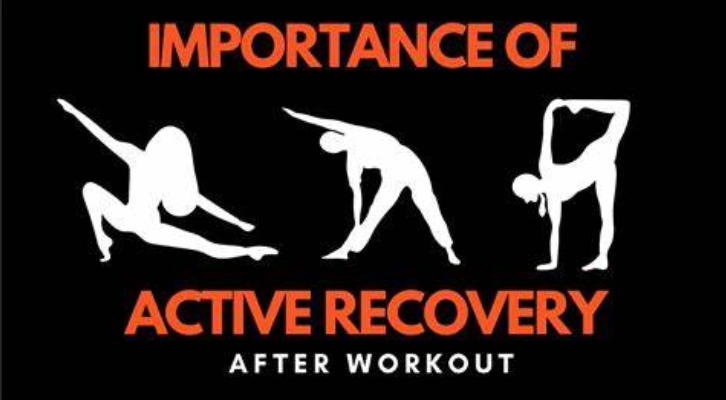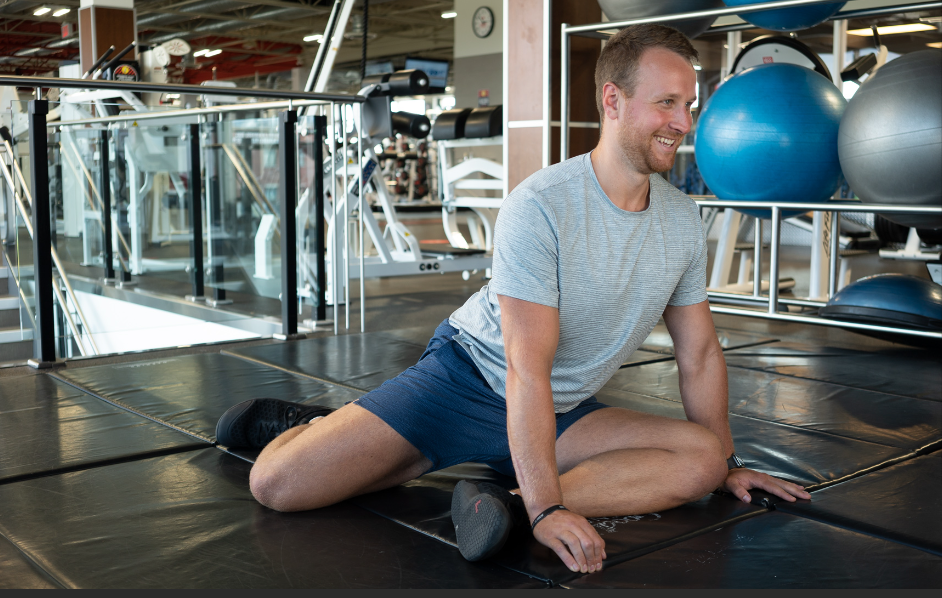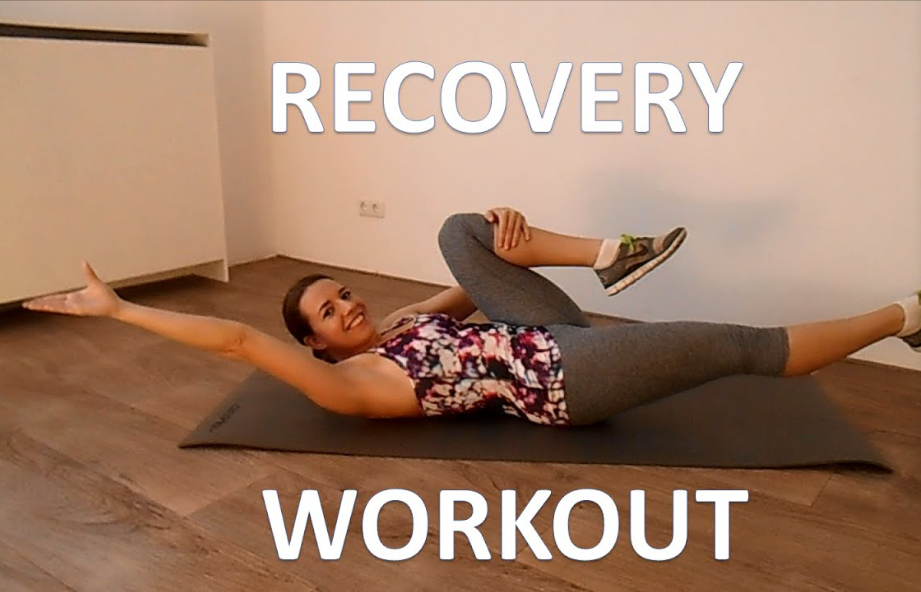When I was still competing at an elite level in marathons and triathlons, we paid lip service to rest and recovery, but recovery looked like lying on the couch for hours on end with a gallon of ice cream on my chest. I put all my energy into training so that on days off I have nothing. Even basic housework was a big deal.
If I had known then what I know now, I would have made more of an effort to get moving on my days off and adopt a more active approach to recovery rather than the passive and frankly lazy approach to recovery that I favored at the time.

I think even the average fitness enthusiast now understands that real fitness results aren’t achieved in the gym or on the track; they happen in recovery. You get stronger, fitter, and faster thanks to the body repairing the damage caused by exercise and preparing for the next race. However, I still see athletes at all levels, from the average fitness enthusiast to the weekend warrior endurance athlete to the high level athlete, resisting recovery. They feel guilty on the days they don’t train. When they’re too busy to make it to the gym, or when accumulated pain or fatigue forces them to take a day off, they worry they’re losing out on hard-won gains.
So they’re usually happy to know that taking a few days off completely is unnecessary or even undesirable for optimizing recovery and long-term performance. It’s usually better to continue exercising during the recovery period. You can and should go to the gym or ride a bike in between workouts, provided you are exercising at a much lower intensity.
What is active recovery?
When people extol the virtues of active recovery, they’re really referring to three different things.
Recovering between or among sets during a single workout. Consider walking between repetitive sprints to lower your heart rate instead of sitting on the track.
Recovering at the end of a workout, such as during a prolonged cool-down. For example, do a simple spin and a few minutes of dynamic stretching on a stationary bike to end your sprint phase.
Exercise to promote recovery on rest days, days when you don’t have a formal training program.
Today we’ll focus on the latter approach, but the goals of all three are essentially the same. Exercise causes tissue damage and burns energy, including intramuscular glycogen. This physical damage and cellular metabolic processes produce byproducts such as lactic acid in the muscles and bloodstream and lead to inflammation, delayed onset muscle soreness and fatigue. Active recovery increases circulation to working tissues (delivering nutrients and accelerating waste removal), reduces soreness, and improves the perception of fatigue so athletes can prepare for the next workout with more energy.
Active recovery training also provides a welcome break from a narrow training regimen. Most athletes complain that they don’t have time to do all the “other things” they know they should be doing – cross-training, foam rolling, agility training. Active recovery days are designed for these types of activities. They also give you a mental break from focusing on repetition programs, progressive overload, threshold pacing, and all the other complexities of training.
As you can see, even calling it a “workout” is a bit of a misnomer, depending on the type of activity you choose. Overall, active recovery simply means that you avoid being sedentary on your days off. Almost any low-intensity, low-stress exercise will do. As long as you’re getting your body moving outside of the tasks of daily living, you’re probably checking the active recovery box.

How often should you participate in active recovery?
Serious athletes may have coaches who schedule weekly or monthly workouts for them, hopefully with active rest days, as well as dedicated loading weeks and periods of reduced training intensity throughout the year. For others, all “non-training” days are used for active recovery.
Primal Blueprint Fitness recommends dedicated resistance training (weight lifting) two or three times a week and sprint training every seven to ten days. You might take a long hike on the weekend or add a couple trucks to the mix. All other days are active recovery days.
Don’t overthink it. I’ve never been a fan of those strict weekly plans in Primal, or even Primal Endurance Athletes for that matter. It’s much better to go with your gut. Turn on the throttle when you’re feeling really motivated, but otherwise just commit to avoiding a sedentary lifestyle. But this only works if you let go of your self-attachment and reject the pervasive “go hard or go home” mentality of fitness. You have to be willing to say, “Yes, I know it’s been five days since my race, but I’m still sore and fatigued, so I’m going to spend another day actively recovering,” instead of saying, “I should be much better by now, it’s time to hit the gym.”
Active Recovery Workouts
The general recommendation for active recovery workouts is to keep recovery workouts at a low to moderate intensity, no more than 60 to 70 percent of your maximum heart rate. I don’t think a maximal heart rate goal is particularly useful because few people know their true maximal heart rate, but you can use RPE (Rate of Perceived Exercise) as an alternative. Keep your effort at or below a 7 and you’ll do fine. Lower is fine. Some of these activities will only bring your RPE above 1 or 2.
Walking
You won’t be surprised to learn that walking is my #1 active recovery priority. Just get in as many steps as you can. When you still have energy left, try taking a walk. During your walk, you can do some steps on a park bench, some hanging from a tree branch, or a set of deep squats from your butt to the grass.
Simple Aerobic Exercises
Light aerobic exercise such as jogging, swimming, biking or using machines at the gym can be very restorative. Just monitor the intensity of your exercise.
You have two options. First, you can target muscles that you’ve recently worked out. For example, you can jog the day after repeating a high-intensity mile workout or squat workout. Or, you can use the time to cross-train (for example, a runner might swim). Both have their advantages. It depends on your goals.
Tai Chi, Qigong, Yoga
Gentle movement exercises are ideal for moving your body through a large range of motion, connecting to your breath, and maintaining balance both literally and metaphorically. They improve vagal tone, which means greater activation of your parasympathetic “rest-digest-repair” system. Most of us are in a highly stressed and hyper-vigilant state where the sympathetic nervous system (“fight-flight-freeze”) is dominant. Prolonged exercise patterns can lead to sympathetic (over) activation. Gentle exercise can help restore balance in the body and bring us back to a state of calm.
Dynamic Stretching
This is one you can do every day, whether or not you have an extensive workout program. Start your day with a dynamic stretch in the morning like my friend Brad Kearns does. He does this every morning to loosen up stiff tissues and get the blood flowing.
Self-myofascial release
Use a foam roller or other massage tool to target stiff or sore areas. I especially like to combine self-myofascial release with dynamic stretching.
Light Resistance Training
An active recovery day is a great time to target areas of weakness or mobility. For example, runners tend to have disproportionately weak gluteus maximus muscles relative to their quads and hamstrings. People who work in front of computers have tight pecs and exhibit what’s known as “tech neck,” so loosening up and strengthening the upper back is good for them.
I like resistance bands and mini bands. Light dumbbells, kettlebells and bodyweight exercises such as basic movements are also good choices. You can do a short workout and watch the RPE again, or reduce the micro workouts throughout the day. You may try to avoid areas that you worked out the day before, but working those muscles increases circulation and promotes recovery. Choose a lighter weight, focus on range of motion, and complete your exercise mass as slowly as possible.
Rhythmic intervals
This is a technique I learned from Joel Jamieson’s 8 Weeks out. Pacing intervals consist of 10 seconds of moderate intensity (RPE 7, no more) followed by a minute of easy recovery. You can do these on a stationary bike, elliptical, jogging, jumping rope, open-and-close jumps-any kind of exercise where you can control the intensity. I’d do 8 to 10 reps, followed by some stretching and maybe a dip in a cold bath or sauna.

Does this mean you shouldn’t rest completely?
It’s great to give yourself time to rest (passive recovery) and enjoy complete leisure sometimes. However, if you’re working out so hard on your workout days that you can barely drag yourself off the couch on your rest days, I’d suggest that you’re overworking. This is how I operate on competitive days, and it nearly bankrupts me. This “push yourself to the edge of a cliff and then crash” cycle is still highly respected in the traditional sports and fitness world, but unless you’re getting paid to compete, you don’t need to put your body through all that.
I rarely have a day where I don’t move at all, not even for a walk on the beach in the morning or a 30-minute ride on my fat-tire bike in the afternoon to give myself time to compose a post. And I don’t think most people need to deliberately schedule passive recovery days either. The exceptions are those who are overtrained or exhausted. If you’ve crossed the line of true burnout, you may need weeks or even months of complete rest to slowly get back to working out.
As long as your exercise stays within a healthy range, you usually don’t need to take a complete break. That said, if you’re close to exhaustion due to intense life stress, other health issues, or poor sleep, even a “reasonable” level of exercise can drain you. The best thing to do is to always listen to your body.
A final word of advice
Don’t let the concept of active recovery become a way to sneak in more exercise and avoid rest! “Today is an active recovery day, so I’ll do a 60-minute power yoga class at 5 a.m. and then ride a few miles after work. But no running!” Fitness culture has created a real fear of taking vacations, but you can’t go to the gym all the time. Don’t fool yourself here. If your recovery workouts leave you feeling tired or exhausted, you’re not managing your efforts effectively. Back up a little more. You should feel more energized, not less, after an active recovery workout.
Finally, it goes without saying that all of these active recovery tips will be better if you support your efforts with good nutrition, hydration and sleep.


